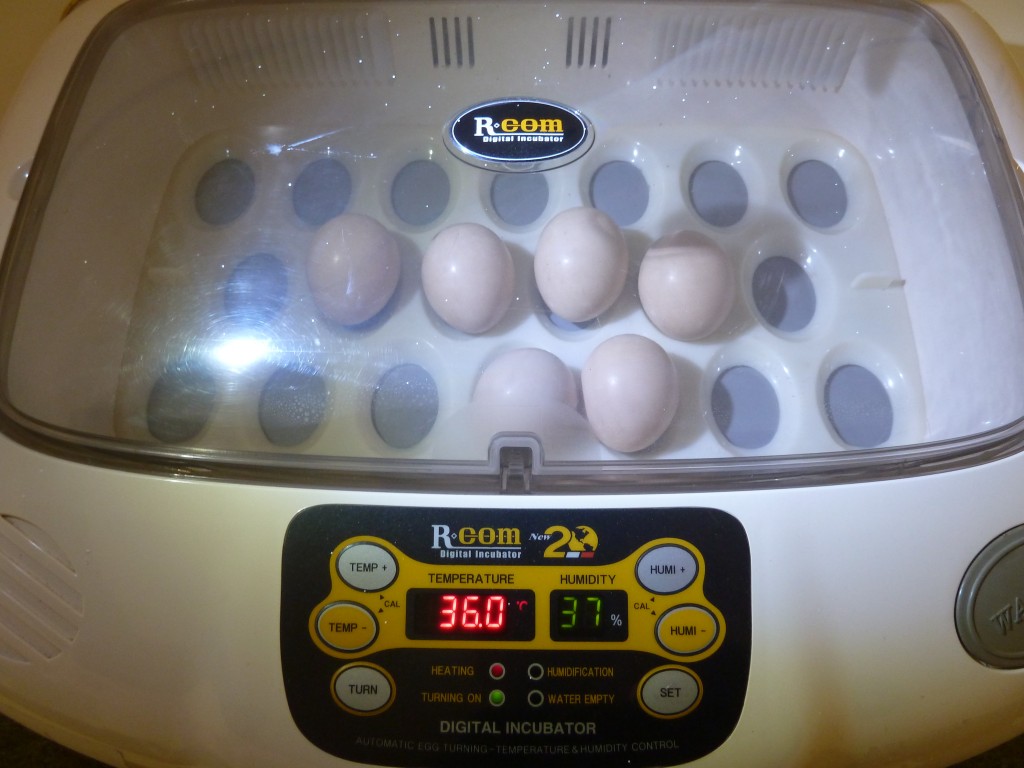Breeding :)
There are springtime vibes in the air at WWT Slimbridge Wetlands centre this February, as some very dedicated females begin their breeding seasons...
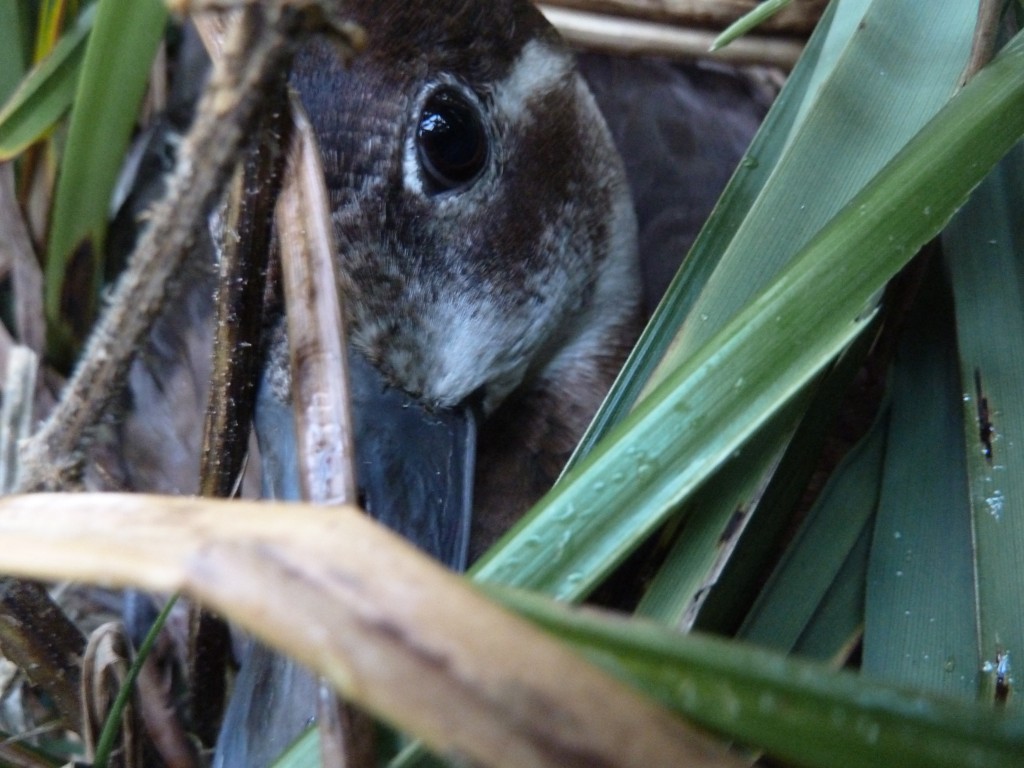
This beautiful Southern pochard female was ready to lay her eggs even before January had passed! She made a tightly bound solid nest base out of sedge, and began to lay her creamy round eggs every 36 hours or so. As with most Pochard types, the male sat on the water looking in the other direction, but she was perfectly up for the job. During the subsequent weeks during lay, this remarkable nest grew from a shallow bowl into a veritable tower of vegetation. It might have sat 4 inches from ground level initially, but by the time incubation began it was more like 3 foot! It's just as well that the aviaries are netted, because she was really quite obvious.
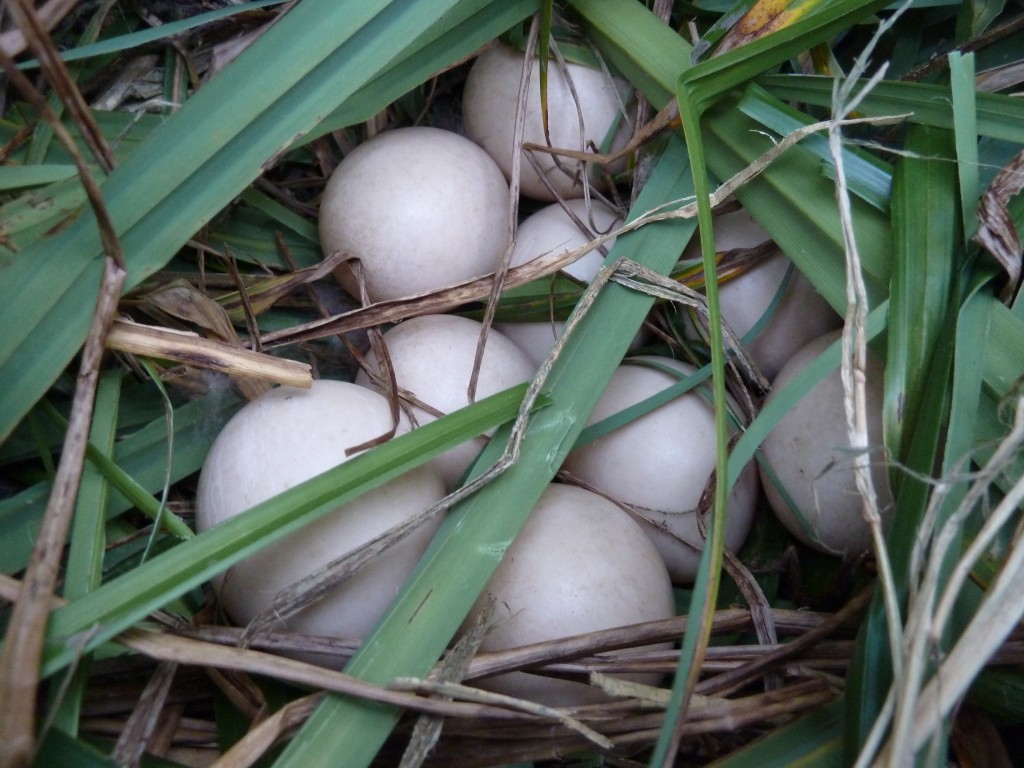
Luckily for me however, this Southern pochard is a feisty little bird! In defense of her nest she would fluff, hiss and spit as well as biting and twisting any skin that she could get her beak on. She was a stunning mother, and so despite the horrendous weather, she was trusted to do 2 full weeks of the early incubation.
Interestingly, if you look in the photo below compared to the first facial image, she has developed new colour markings! Her forehead and brow are now speckled with black, and her eye has taken on an amazing red glow. Both these characteristics are male! There are two reasons that I know of for this to occur.
1) Excessive stress where the female gets agitated on a regular basis and remains in a constant state of awareness. As a result hormones flood around her body and manifest as aggressive male colour indicators in her plumage.
2) An indication that this female is almost going through a sort of "duck menopause" and is an indicator that she has stopped creating eggs and is not likely to be fertile any more.
Whatever the reasons for her aesthetic; making a nest 3 foot tall by the breeding aviary door was not a brilliant way to minimise human and avian contact!
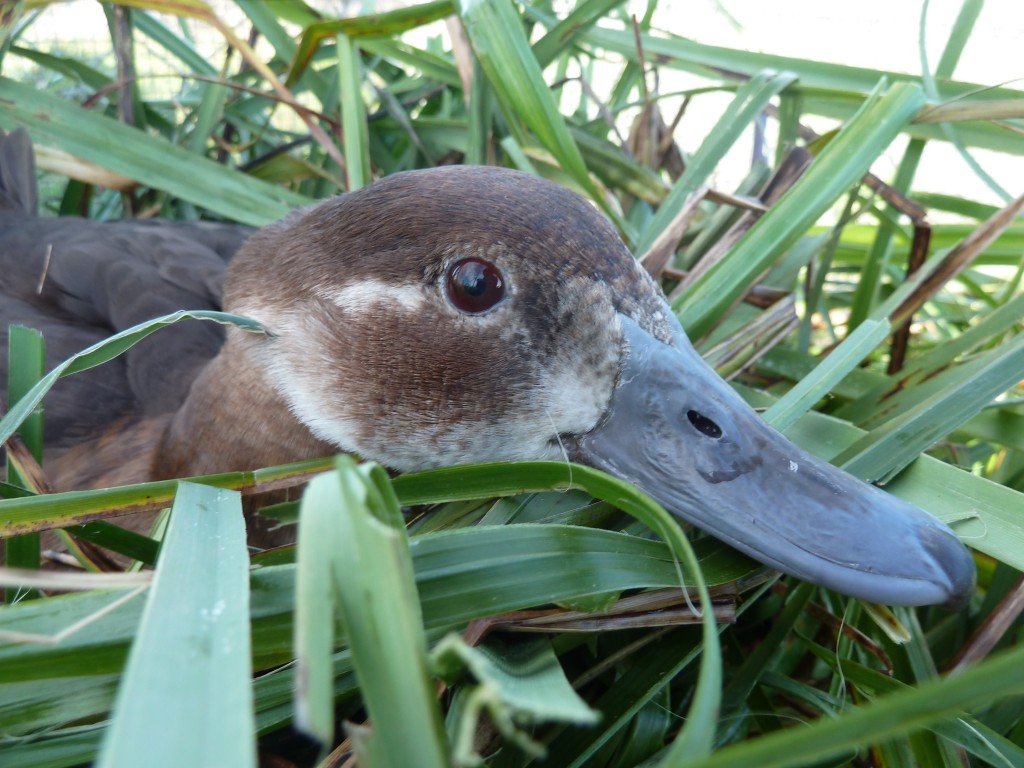
After the tower was finished and she began to incubate, I was under the impression that she had 9 eggs; a rather impressive clutch for the time of year, and almost certainly hard total to sit on. Remarkably though, when we came to collect the clutch in to the incubators she had a stonking 13!!!
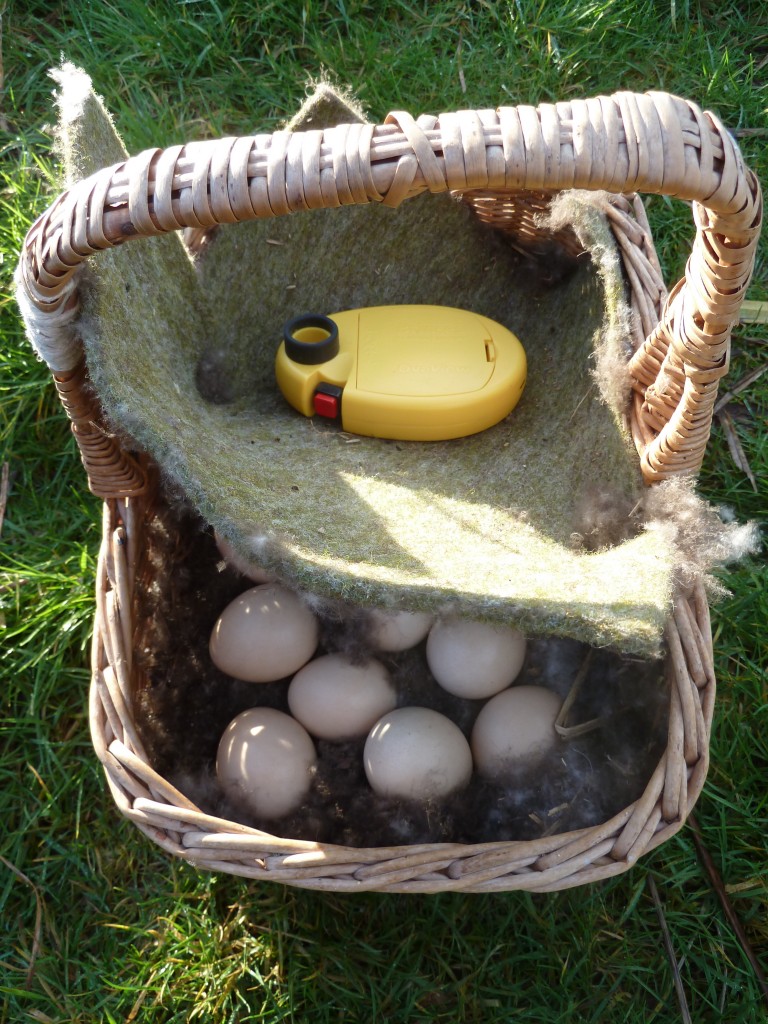
As you can appreciate, the combination of poor weather, ridiculous nest height and astronomical egg total meant that some of these beauties below were not viable. Of the 13, 9 were fertile, and 6 were still alive. As a species that does not put a huge amount of down around the eggs, I think she had struggled to keep the eggs warm enough and had almost slowed the process of embryo growth to a crawl! The first few days of artificial incubation saw a lot of new development.
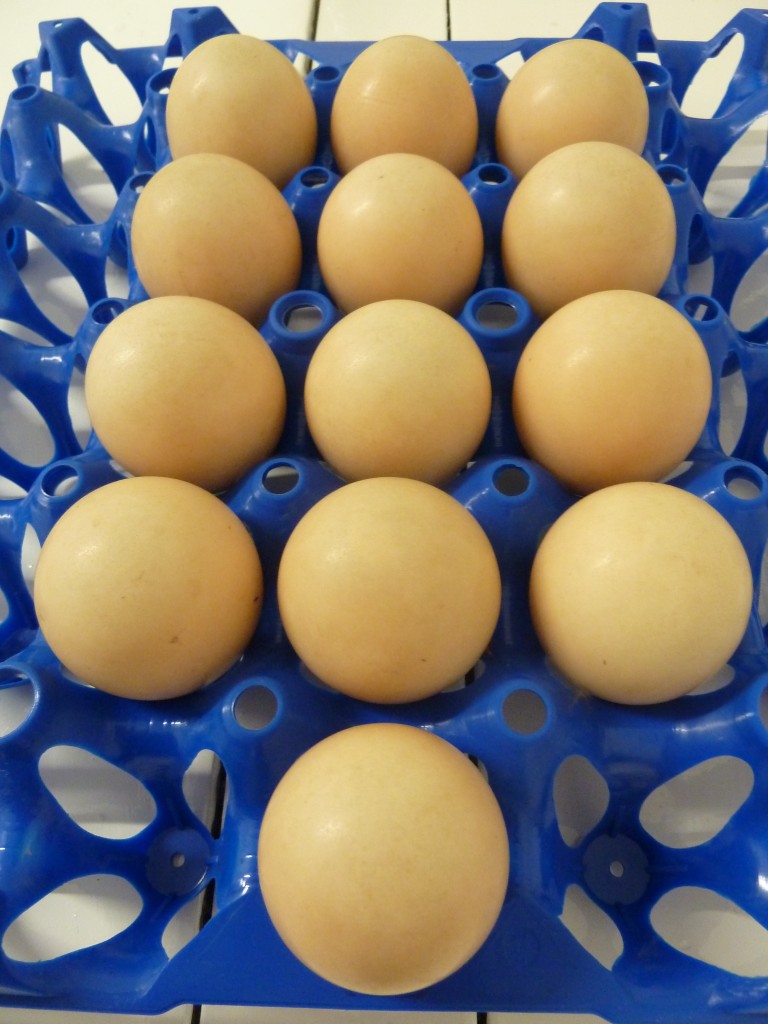
Unfortunately the bad news is that nearly every day from then on, a healthy egg went addled. Bit by bit the little veins burst and dissipated and the growth pulled away from the airspace. On hatch day there were 3 left. Two hatched, but did not survive. Upon post-mortem it was discovered that they had infected yolk sacks. This means that the little duckling's first internal meal (the yolk) contained an infection with which they had to battle before they were even a day old. As you can imagine, I was devastated.
Having never successfully bred from this female before, there are several valuable life lessons to learn here:
1) She makes silly nests.
2) She lays a lot of eggs!
3) She does have fertility.
4) She suffers from stress.
The question I need to ask is; does the southern pochard egg does not suit our Slimbridge climate?
There are several ways forward from here. If she lays again in the summer (the chances of which seem very high) I can gently manipulate any of the above factors to help her succeed on her own, or I trust the job to another mother whether she be feathered or artificial.
This species is poorly represented in captivity, whether south American or African. We believe that this female is an African, the south American females appearing darker overall. With a Slimbridge population that you could count on both hands, you can appreciate that I was excited to add to them from a new pair. I'll just have to try something new and different next time.
Learning the 'do's and don'ts' of certain species is the biggest investment that I can personally offer WWT's conservation breeding programme. Our standard incubation pattern doesn't work here. My personal hunch is that the biggest problem is her nest building tactics. I wonder whether the provision of pre-built nesting platforms, alternative nesting material and "wooding" her eggs whilst she is building, might be the next way forward. I look forward to the challenge!
